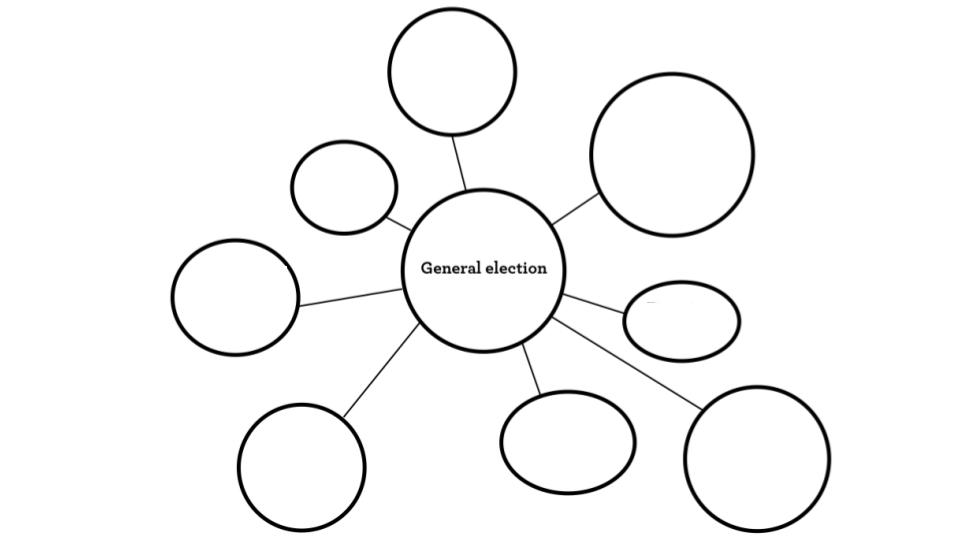Features:
Network mapping: Learn a 30-minute strategy to find the right audience for your next project (and have fun doing it!)
This exercise can help you focus a project and include more voices in your reporting

Image by Gordon Johnson from Pixabay
Beginning an audience engagement effort can be intimidating. How do you decide who you want to reach? How will you justify putting your resources into this project? How can you be sure you’re including the right people?
We don’t always give ourselves enough credit for the knowledge that’s already inside our heads, and as journalists we can become paralyzed in the pursuit of perfection. That’s particularly true for projects that are outside the scope of our regular work and beyond the reach of deadlines. Let’s be honest: To get this work done it must move off the “nice-to-have” list, which is doomed to collect dust on a shelf somewhere, and onto the “must-do” list. And the way to do that is outline exactly how the project will help you achieve your larger organizational goals.
Luckily, we have an exercise for you to jump-start that stalled idea engine. And it only takes half an hour.
Network mapping is a framework that I first learned about in my marketing classes as a way to better understand multiple stakeholder groups who have connections to a brand. In 2020, I adapted that framework to create this exercise as part of Hearken’s Election SOS training in engaging audiences around election coverage. Election SOS participants Katherine Nagasawa and Jennifer Hack Wolf joined me for SRCCON 2021 to share how they applied network mapping to their engagement work at WBEZ and The Beacon.
This exercise scales to any size project: Whether you’re developing a newsroom-wide strategy for connecting with audiences or you’re looking to quickly find sources for a single story, network mapping allows you to identify what you’re seeking to connect with audiences about, who cares about that topic and how you can reach them.
You may be tempted to do a lot of research before you put pen to paper (or fingers to keyboard, or Post-It to wall). And that’s fine, but don’t delve into a lot of time-consuming audience analysis if it keeps you from getting to the exercise in a timely fashion. Once you’re ready to get the ideas flowing, here’s what to do:
Step 1: Pick your topic and connect interested groups
Start with the topic you’re looking to connect with audience members about. Let’s say your topic is the general election—that goes in the middle of your network map.

The outer circles are for groups of people who care about or are connected to this topic in some way. For example, you might add first-time voters to one circle, parents to another, environmental activists to a third, and so on.
You’ll notice that people will fit into multiple circles, and that is fine. You could certainly have an environmental activist who is also a parent. And you can categorize your circles, grouping some by interest, others by identity, others by demographic or geographic information. The important thing is to find groupings that are relevant to the topic in the center.
The map can visually demonstrate other characteristics of the stakeholder groups as well. Maybe you make the circles larger for audiences who you believe have more people in them. Maybe the circles are grouped more closely to the center for people who care more about your topic or are more closely involved, and you put people who are less closely connected farther away. You can arrange it any way you want, what’s important is that it makes sense to you.
WBEZ in Chicago arranged their network map to identify people most impacted by COVID–19 by breaking it down into health and economic impacts.

Step 2: Push beyond the obvious
As you build your map, you’ll notice a point where the ideas are no longer flowing as freely. Don’t stop here. Push through that slowdown to keep adding audiences. This is where you get really creative and begin to identify opportunities for outreach that aren’t so apparent at first glance. Moving beyond your comfort zone also forces you to really think beyond the usual suspect sources—the ones that are so easy to call on when needed—to develop more intentional and varied groups to reach.
In our SRCCON session, we broke into groups to design maps. One group chose the long-term social impacts of COVID–19 as their topic. The first several groups we added to the map were those you might expect: public health workers, people with chronic illness, students. But as the ideas began to slow down we started coming up with groups that were both more specific and more unique: people who don’t have access to the vaccine because of intellectual property laws, people negotiating friendships where some friends are vaccinated and some are not.
Once you’ve put together a map with a lot of options, both obvious and those that took a little more mental digging, you may feel overwhelmed. Don’t worry, this is just a starting point and you will narrow your focus to something manageable.
Step 3: Who’s missing
Next it’s time to look at your map and ask: Who is missing? This may be audiences you have trouble reaching or those that didn’t first come up when you thought about the topic. In our session, we came up with 22 ideas for groups we hadn’t put on the map, such as recent immigrants, people who are tired of COVID coverage, and “Millennial children of doorknob-licking Boomers.”
Step 4: Where to start
Finally, it’s time to narrow down your list. Look at all the groups and identify a couple where you could start outreach efforts to understand their concerns. You can always revisit other groups later. Our session decided to look at friendships between vaccinated and unvaccinated people, and thought up some avenues we could use to reach that audience. We settled on therapists, clergy and public libraries as people and places who could connect us to those with a stake in this story.
As you design your initial outreach efforts, it’s essential to remember that good audience engagement is equitable, not extractive.
Of course, in order to make this manageable, you’ll have to choose a few groups to start and say no to others. That doesn’t mean you don’t care about the other groups or that they are somehow less important—it simply is a function of having limited time and resources. Don’t worry, you’ll be able to revisit this as many times as you wish!
Making the most of your results

Photo credit: The Beacon
Network mapping is an efficient way for your newsroom to prioritize precious resources in order to identify compelling new story ideas and build your audience.
In this lightning chat, WBEZ shares the results of their network mapping strategy: they received over 2,200 questions (with over half from ZIP codes they were targeting) that led to several stories, a custom field guide to Illinois government and three town halls with an average of 500 attendees at each.
Hack Wolf of The Beacon offers these tips for introducing network mapping to your newsroom:
- Get as diverse a group together as possible. This will open up new possibilities and help address areas where your outreach efforts may not be as strong. For inspiration, review the American Press Institute’s guidance on recruiting community members for an advisory board or consider how KPCC listed the perspectives they wanted to learn from in step 1 of designing a new education beat.
- Timebox everything. It’s easy to get lost in one stage of the network mapping exercise, but this really can be a 30-minute exercise! Setting limits on how much time you will spend helps you move forward.
- Ask great questions. Get curious about why people might care about the topic and how you could reach them. Look beyond your own platforms to the information spaces these groups regularly use.
- Try tools such as Jamboard for collaborative mapping, as she describes in this lightning chat.
Most of all, she advises newsrooms to start small and get going. The beauty of this exercise is that you can return to it and refine it as much as needed, to continue to build your audience engagement strategy.
Further resources
- Network mapping is a concrete method to include more voices in your reporting (Nieman Lab)
- How to Use Network Mapping to Build Partnerships and Expand Reach (Medium, Hearken)
- Identify key stakeholders + information needs (Journalism + Design)
Credits
-
 Bridget Thoreson
Bridget Thoreson
Bridget Thoreson is the member collaborations editor at INN, working with newsrooms to frame, fund and execute project-based editorial collaborations, ongoing partnerships and collaborative networks. Thoreson worked with journalists from 109 news organizations as an engagement consultant at Hearken, where she served as project manager for Election SOS, which brought together 45 organizations to support more than 1,500 journalists during the 2020 election. She is based in the Chicago area.




 How to make sense of all the COVID-19 datasets right now
How to make sense of all the COVID-19 datasets right now